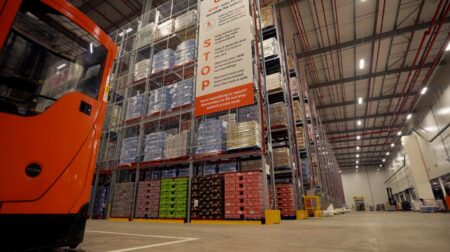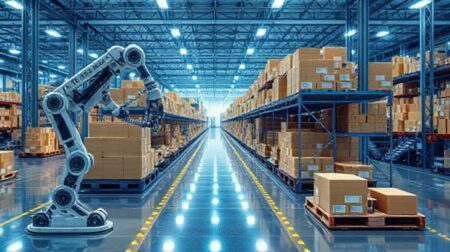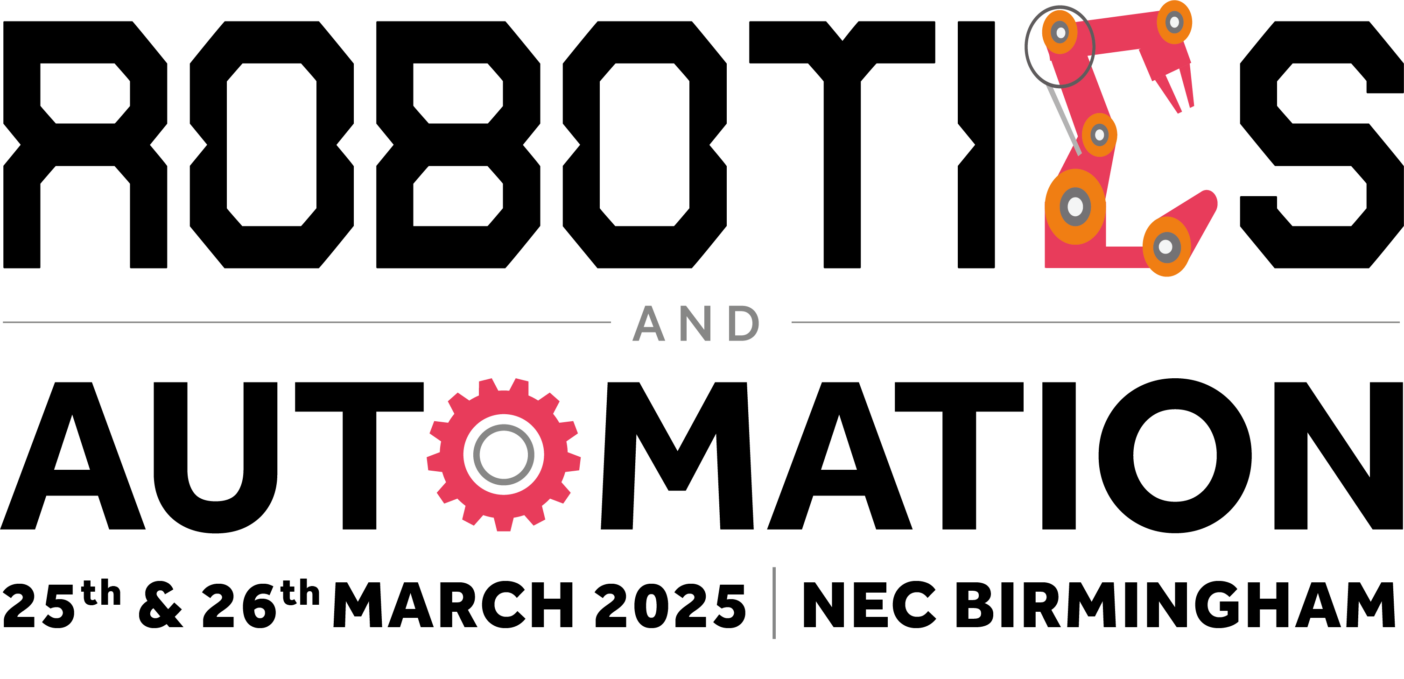Most organisations are looking at transitioning manual processes to automation to increase their productivity, expand their capabilities and counterbalance labour shortages. However, getting started can be intimidating…
Here, six industry experts identify the manual processes best suited for automation, outline the considerations to take when transitioning from labour-intensive to automated processes and explain how to ensure businesses get the most out of their robotic investment.
How can a business know if automation is right for them?
Pawel Michalak, global director of innovation at Fugro: Every business is different, but generally the best way to know if automation is right for your organisation is if you’re wasting a lot of time and cost on repetitive tasks that do not add value or efficiencies. Generally – businesses should look to automate anything repeatable, so the first step is to identify all these types of processes that exist within the organisation and, where possible, standardise these. The other key consideration is whether culturally, your business is ready to make that shift to automation. AI and robotic integration can unlock huge potential for business however, making sure that there is a good understanding of the value they bring is essential before embarking on this journey.Jonas Nyvang, co-founder and CEO at Stilfold: The key consideration is whether there are any steps in your production or supply chain that are currently carried out by humans but are particularly time-consuming or expensive. Start by looking at the entire process and the people, systems and actions that make it work – and assess which elements you could automate to speed that process up or save costs. Crucially, you want to look at where robots take on some of the heavy lifting or admin-intensive tasks, freeing up peoples’ time and capacity to add value to the business elsewhere.
Alan Martin, director at Vision Research: Firstly, automation is always right for any business – if it is done correctly. However, if businesses need some key indicators to understand whether they need automation: Is there a high turnover in staff, are workloads excessive, are processes very manual, could turnaround times be quicker if tasks were removed, are there constant service/product quality issues, would you struggle to take on more sales, are people in the business struggling for time…the customer is paying for a product or service, not everything in between. All of this in between is a cost to the business. If there are tasks that the customer is not paying for, then automation will help. Getting to the result much quicker means an increase in profit without increasing your prices or sales volume.
Dr Paul Rivers, CEO at Guidance Automation: Within a warehouse operation, organisations can explore different techniques to improve picking performance and accuracy – such as pick to light and voice-activated systems. Within manufacturing, conveyors and scanners can help to improve inventory management and improve productivity. Undertaking a simple trial of one or two autonomous mobile robots (AMRs), a business will realise how quick it is to deploy and can then answer, in practice, the many pressing automation questions, such as ‘How do robots work alongside people?’, ‘Where can they be used?’ or ‘How often do they need charging?’.
Antonio Espingardeiro, IEEE Member and robotics expert at Salford University: There are many industrial applications of robotics for businesses to consider and assess. But businesses should understand that areas such as critical thinking, advising, customisations, art, design, dedicated customer service, empathy and sympathy will not be fully automated anytime soon. Machines will not take over where there is creativity, emotion, social intelligence and human contact involved. These are all human traits that are difficult to translate through machines – therefore roles and sectors reliant on these skills will unlikely be automated in the near future.
Padraig Regan, chief product officer at StayLinked.: We hear customers saying that they ‘want’ AMRs. There is a perception that if you deploy robots, they can do whatever you want them to do, but it is not that simple! Businesses must understand exactly what they want to achieve from implementing AMRs and then take advice as to what is and is not possible. They need to get to grips with the functionality AMRs provide and whether these capabilities will work for their operations.
What manual processes are commonly being transitioned to robots?
PM: The first focus areas are the ones where safety is a concern. Any task where humans can be removed from potentially dangerous situations should be at the top of the list of any business looking to transition to robotics. Robots and drones can also perform many of the activities commonly attributed to data collection, field intervention or even production, in a manner which is much faster and more precise. In this case however, the robots are mostly still controlled or supervised by human pilots. Other processes that benefit hugely from a transition to robotic automation are repetitive tasks that could be made more efficient or sustainable by the transition to automation. These manual tasks are where robotic integration is key.
JN: There are almost too many examples to name. But broadly we’re seeing automation take place in online retail and logistics, where robots are being used to find items in warehouses ready to be packed and to speed up supply chains. It’s also being used in industries like manufacturing for programming robotic arms to build all manner of products – even e-scooters – by folding steel. It could also be used to automate bigger construction projects such as building bridges, trailers and boats using specialist software and robotics.
AM: Unfortunately, today most processes are capable of being eliminated through automation. Every process from the factory/warehouse floor, right through to the admin office is being automated. No one area is ‘safe’, with everything from manufacturing, stock fulfilment, IT, accounting and even sales being automated and transferred to ‘robots’.
PR: Adding one or two robots to a business can reduce the amount of time operatives spend walking around a warehouse or allow individuals to concentrate on added value activities, such as quality checking. It can add contingency, helping a business manage the current staffing shortfalls. Staff can spend more time picking and the robot can then take items to the next location. In a manufacturing setting, a robot could take the finished goods to the stores or bring raw parts from stores – after they have been manually quality checked by a skilled employee. This approach allows the business to make the best use of all resources.
AE: For dirty, menial or dangerous jobs, robots are the ideal candidates for performing tasks such as disinfection, recycling or repetitive jobs. At the same time, we will see robotic systems applied to healthcare through various forms. Robots with high precision and repeatability can be controlled by surgeons and will assist with operations and other procedures improving the accuracy, quality and delivery of care. It is worth noting that machine learning is already being applied to track diseases through image processing techniques, analysing large volumes of data and identifying patterns or anomalies. These techniques are likely to gain traction over the next few decades. When it comes to business, we will see a significant rise in the application of machine-learning technologies to inform decision making, whether that is predicting customer behaviour or trends, or simply tracking monthly data cycles. Chatbots and virtual assistants are already being applied within the retail sector and customer support, as well as within education.
PR: The manual processes commonly being transitioned to robots can be viewed as those tasks which, when an employee is carrying them out thinks that it would be fantastic if an assistant were available to help make that task quicker, easier, more productive and efficient, or even that an assistant would mean that there was no need for the employee to do it at all! AMRs augment employee workplace experience, which is crucial in the retention and recruitment of labour. AMRs do not replace employees, they work alongside them! This provides a transformational approach to automation, enabling organisations to implement at their own pace, monitor how the implementation is working and how the benefits are being delivered, which drives the implementation of the next stage of automation.
Who are the key players to involve when starting an automation project?
PM: Organisations should utilise the services of domain experts and consultants who can share key learnings and insights. Additionally, it’s essential to involve the relevant technology providers, both in terms of the infrastructure, but also to deploy specific industry focused technology. However, the most important players to involve are the ones who are in your organisation already. Making sure that all employees, including management, are onboard is critical in bringing everyone along on the journey. Much emphasis needs to be put on creating the right culture within the organisation to ensure that people are not only open to automation but embrace it.JN: Your employees need to be your priority – and if transitioning to automation is going to impact or change their roles, they need to know about it first. It’s also important to involve your technical and financial leads to make sure your investment is going to pay off. Spend time working out the additional revenue your investment will drive (if it’s going to help you scale a particular process) or the savings you are going to make on labour costs or material costs in a particular area, so you can be certain that you’ll see an ROI. You should also factor in productivity gains, the financial benefit of staff retention and lower incidences of staff absence, as these can all be consequences of automating certain processes.
AM: Everyone should be involved from the start, or at least a representative from each area of the business (if it is a big business). Despite ‘automation’ ultimately taking people out of the process, you need the people to implement the automation to its maximum potential, and in a way that does not negatively impact other areas of the business. Every corner of the business needs an input to ensure any project is a success. Automation projects will fail on proposed ROI and timescales if the whole business is not brought along on the journey. It is important to remember that customers and suppliers are also a part of your business!
PR: It is key to identify the right opportunities for automation that can deliver immediate gains. To begin this process, businesses should partner with an automation expert to undertake an assessment of their current warehouse or production facility to assess and advise on the viability of the project. An expert will be able to identify possibilities of where automation can be added and the benefits and efficiencies that can be gained. Businesses can then understand how automation can be embedded in any organisation, of any size, to create an efficient and flexible working environment – that can also help them to remain competitive against their larger counterparts.
PR: It is imperative to work with an implementation partner who has proven experience in successfully deploying automation solutions within a similar organisation. An implementation partner who is not a ‘yes man’, a partner who continually questions the business’ automation ambitions. If anyone reading this is already working on the implementation of an automation solution and is not being challenged about what you want to achieve and how you think you will achieve it, then you potentially have a problem when it comes to implementation! Without the right partner, simple issues can become enormous problems once implementation begins. An implementation partner who understands the business challenges moving to automation, and who has the specifically designed technology platforms that enable those organisations’ systems to seamlessly ‘talk’ to the chosen automation technology, is a no-brainer.
How can businesses ensure they get the most out of their robotic investment?
PM: The most important step is to define what success looks like when it comes to the investment. This may be faster decision making, cost savings, streamlining operations, improved efficiency, improved sustainability or a combination of several goals. Whatever the aim, ensure these are fully outlined before integrating robotic operations as well as creating strategies and measurement criteria to set you up for success. It’s an ongoing journey, as technology continues to develop and change, so too will the parameters for success. But, if organisations are willing to adapt, automation is the key to unlocking huge levels of untapped potential.
JN: Educate and engage your team. Innovation is exciting and you want your employees and stakeholders to be on board and to understand what the changes mean for the future of the business. You want them to be excited, rather than intimated, by the technology. You might also want to upskill employees to run the automated work cells. You should also ensure your investment is sustainable – financially and environmentally. Invest in technology, materials and suppliers that are developed with the planet in mind to future-proof your business and your investment.
AM: There are two key elements; spend more time up front in understanding what is needed from the people within the business; and ensure that, once implemented, the new process/technology is reviewed and adapted to meet the new demands, or tweaked where it is not working as it should be. By simply investing and implementing (and assuming job done), you will not get the most out of your investment.
PR: With confidence in the technology and a real understanding of automation in practice, it is far easier for a business to consider where and when automation could fit. And for those companies still concerned about the level of investment, growing numbers of robots are available on a rental model – even by the hour. The key is to build that confidence, embark on a small-scale trial and understand how automation works in any business, of any size, to create a successful, efficient hybrid workforce that can scale up and down in line with demand.
AE: First, it is important to consider robotics alongside AI. There is this intrinsic relation between software (mind) and hardware (sensors) that can really make the difference. For businesses investing in robotics, there are still so many technical challenges to overcome. For example, we need to create machines that exhibit high levels of locomotion and dexterity but are also associated with low energy consumption. When it comes to computer science, you are traversing the areas of intelligence related to both neuroscience and philosophy. Of course, building an effective AI is a major focus, but we need to draw upon ‘biological intelligence’ and nature, whether that involves looking into animals or humans.
PR: By taking a transformational approach to the deployment of AMRs, rather than jump straight into the deep end with an all-in approach, it is possible to monitor and assess the success of each step-change which has been implemented. It is possible to monitor exactly how much the implementation of AMRs has improved, streamlined, increased efficiency and productivity of overall operations and if the investment in AMRs has achieved the automation ambitions and objectives. If not, it’s possible to pause, think again and to understand what has not worked and why. You can then make the necessary tweaks and reset. This transformational approach allows businesses to quickly recognise that the implementation has ‘failed’ without spending years implementing a highly expensive ‘all-in’ solution that has resulted in ongoing disruption, which ultimately does not deliver on the investment.
This article originally appeared in the July 2022 issue of Robotics & Innovation Magazine








